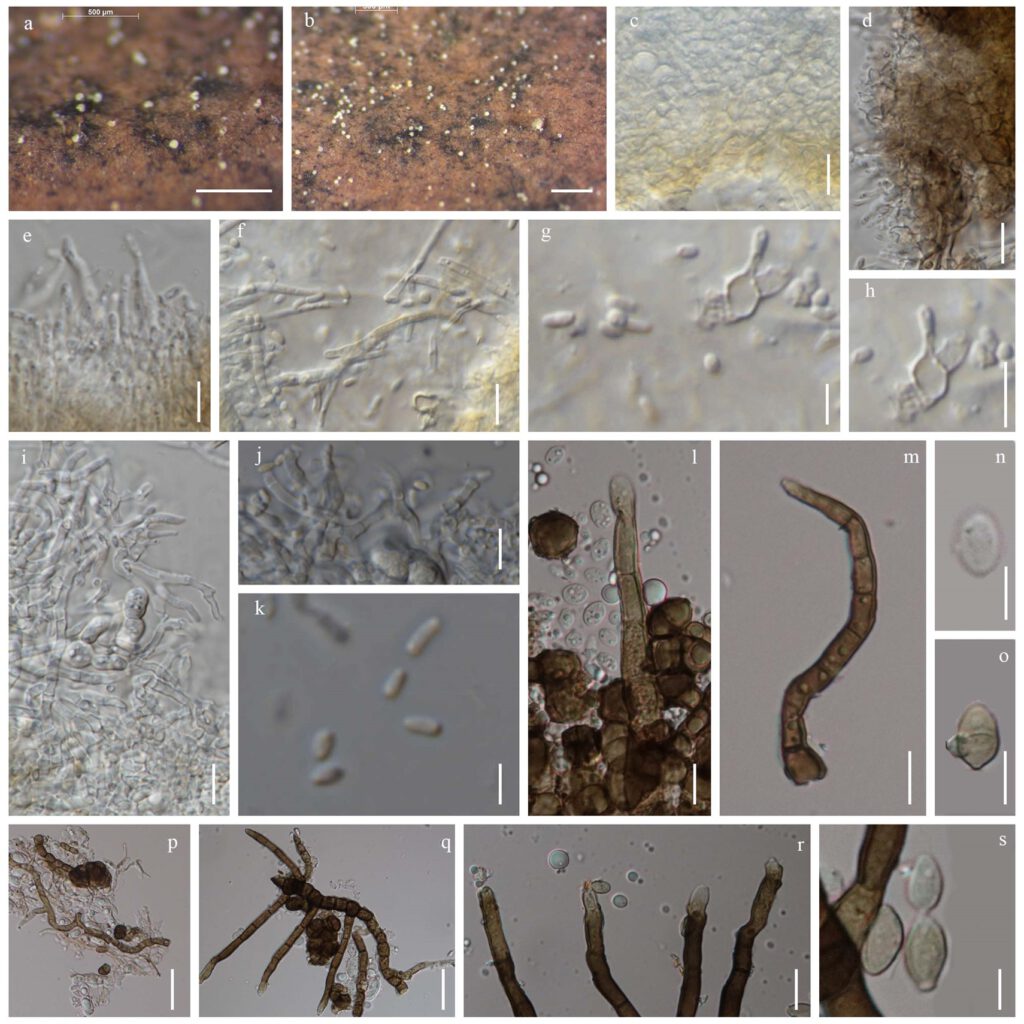Paraconiothyrium brasiliense Verkley, in Verkley, da Silva, Wicklow & Crous, Stud. Mycol. 50(2): 329 (2004), (1710R9) (Dhanu)
MycoBank number: MB 500082; Index Fungorum number: IF 500082; Facesoffungi number: FoF 10757; Fig. **.
Saprobic on dead stems of Rhododendron sp. Sexual morph: Undetermined. Asexual morph: Conidiomata superficial or immersed eustromatica, dark brown to black with a single cavity, more often complex with several merging cavities, ostioles absent, opening by dissolution of upper cells; conidiomatal wall composed of a 10–20(–25) μm thick outer layer of texture angularis with relatively thin, dark brown walls, the cells 4.5–10 μm diam, lined by a 10–35(–45) μm thick inner layer of textura angularis–globulosa, the cells 4–12 μm diam with thin, pale yellow to hyaline walls; nidiomatal wall composed of a 30–45 μm thick outer layer of isodiametric or more flattened cells with hyaline to reddish brown walls thickened up to 1.5 μm, lined by a 35–60(–75) μm thick inner layer of textura angularis with cells 3–10 μm diam with hyaline walls thickened up to 0.5 μm. The surface of the conidiomatal wall often covered under brown entangling hyphae. Conidiogenous cells discrete, assembled into protruding masses of cells, or integrated in very compact conidiophores, ampulliform to subcylindrical, hyaline, indeterminate, phialidic with an inconspicuous periclinal thickening and collarette, later often with a single percurrent proliferation, mostly 4–6.5 × 2.5–3.5(–4) μm. Conidia narrowly ellipsoidal or short-cylindrical, straight or slightly curved, rounded at both ends, 1-celled, with one or two small, polar guttules, and with thin and smooth walls that are hyaline at secession.
Material examined – China, Yunnan Province, ** district, on dead leaves of Rhododendron sp., 3 October 2019, Napalai Chaiwan, 1710R9 (MFLU T19-1381, holotype).
Host – Rhododendron sp.—(This study).
Distribution – China—(This study).
GenBank accession numbers – MFLU **; SSU: ***; ITS:***
Notes – Paraconiothyrium brasiliense is isolated from on Prunus spp. from South Africa (Damm et al. 2008) and Chinese Maple Leaves in Korea (Paul et al. 2014). A strain recorded from the different host of Paraconiothyrium brasiliense. In a BLASTn search of GenBank, the ITS sequence had 99.66% similarity, while the LSU sequence had 99.43% similarity. Thus, the new strain is introduced as a new record of Paraconiothyrium brasiliense based on different host.

Figure ***– Paraconiothyium brasiliense (1710R9, MFLU ***, herbarium). a–b Appearance of Conidiomata on host substrate. c,d Section through conidiomata e–j. Conidiogenous cell k, n, o, s. Conidia l, m, p–r. Conidiophore Scale bars: a,b=500 μm. p–r=20 c–f, h–j, l–o=10 μm. μm. g, k, s=5 μm.
